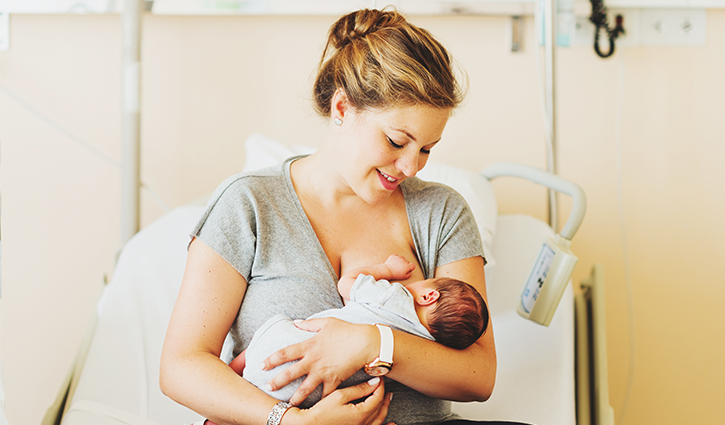

Congratulations on your new baby! Now that pregnancy is behind you and you’ve got a unique birth story to tell, the transition to the wonderful but challenging postpartum period lies ahead, and perhaps also first-time motherhood. With it not only comes a beautiful baby to get to know, but also a variety of new (and sometimes unusual) symptoms and challenges.
To help your postpartum recovery hopefully go a little smoother and quicker, we’ve put together a list of five tips for you, plus a handy checklist of a few things you might need. If you have any questions at all, don’t forget that you can ask our supportive community of mums over on our Facebook page.
5 ways to boost your recovery after birth
How long recovery takes after birth varies depending on the woman, the pregnancy, birth, and support during the fourth trimester. Whether you had a vaginal delivery or C-section, you can expect the recovery period to be around six weeks. Even if you feel almost like your old self again after a week, your body has been through a lot and still needs this time to heal and rest.
1. Know how to help your perineum and/or C-section scar heal
Ice your perineum every couple of hours to reduce swelling, and try a warm sitz bath as often as you can to reduce pain and irritation. Read more about perineal tears in more detail here. To care for your C-section incision, gently clean it with soap and water before patting it dry regularly. Read more on how to help the scar to heal here.
2. Get plenty of rest and seek help
Daytime rest is essential, so balance rest with activity. Get as much sleep as you can, and lie flat when you rest. Try to avoid lifting anything heavy or doing too much at first. This is the time to ask for and accept offers of practical help from friends and family, so that you can prioritise rest.
3. Eat nourishing meals and keep hydrated
Avoid constipation and haemorrhoids by eating plenty of fibre-rich foods, including fruit, vegetables, and whole grains. You might feel more comfortable eating little and often rather than three heavy meals. Increase your fluid intake, particularly if you’re breastfeeding. Try to skip the alcohol and caffeine for now while you’re emotionally and physically adjusting to your new life.
4. Move your body and strengthen your pelvic floor muscles
When your doctor or maternal and child health nurse gives you the green light to start gently exercising, you could start with some gentle walks outside. Getting outdoors will also do wonders for your mental health, help with digestion and constipation, and improves muscle tone and blood circulation. As soon as you’re comfortable, do your postpartum pelvic floor muscle exercises to prevent or minimise issues.
5. Know what support and help is available for yours and your baby’s health
This period can be intense, isolating, and exhausting, but you’re not alone. There are plenty of resources available and support you can access from your home while you recover from the birth. If you’re having any issues, you need advice, you’re struggling, or suffering from postpartum depression and/or anxiety, please reach out for professional help here:
Maternal and Child Health Services
Pregnancy, Birth and Baby Helpline
Australian Breastfeeding Association Helpline
Postpartum recovery essentials checklist:
✔️ Maternity or maxi pads
✔️ Ice cubes or packs
✔️ Sitz bath
✔️ Witch hazel
✔️ Peri or squirt bottle
✔️ Nursing pads
✔️ Nursing bras
✔️ Postpartum recovery belt or shorts
✔️ Heat pad for aches and pains
✔️ Nipple cream
✔️ Stool softener (as advised by your doctor)
✔️ Cotton underwear (or disposable) and comfortable clothes
✔️ Pain reliever (as advised by your doctor)
✔️ A freezer of healthy meals and plenty of snacks























